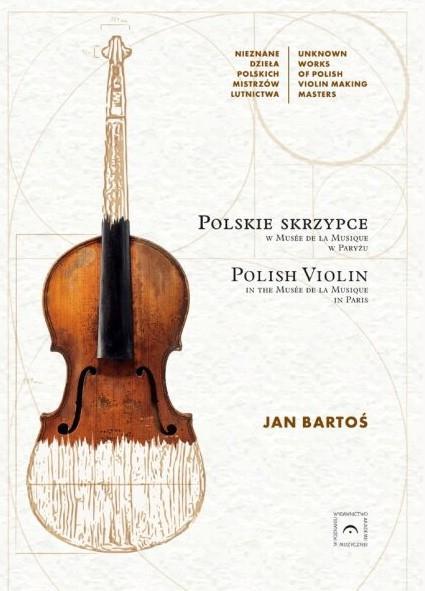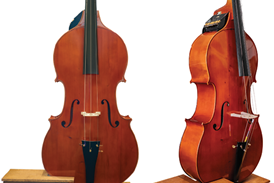Philip Brown reads through Jan Bartoś’ investigation into a mysterious instrument in the Paris museum’s collection, revealing the details that prove its Polish origins

Polish Violin in the Musée de la Musique in Paris
Jan Bartoś
96PP ISBN 9788365727671
Wydawnictwo Akademii
Muzycznej w Poznaniu €50
In 2016 Jan Bartoś co-authored the excellent publication The Polish School of Violin Making from Groblicz to Dankwart. He has followed this up with an examination of an instrument in the Musée de la Musique in Paris, the first in a projected series of monographs. What at first glance might look like a uninspiring read, concerning a hitherto anonymous violin in the museum’s reserve collection, turns out to be a fascinating study of a violin clearly steeped in the Polish school.
This study utilised the traditional methods of violin experts and the resources of the Musée de la Musique and the institute of the Paderewski Academy of Music in Poznań. The examination process is clearly described in the introductory passages by Jean-Philippe Échard, curator of stringed instruments at the Musée de la Musique.
The first of the four chapters gives a data-rich account of the historical background of Polish making in the 17th and 18th centuries. It concludes by outlining the physical characteristics of the Polish violin school, which really are like no other: the wood choice, unusual pegbox shapes and carved heads, the Maggini-inspired full-bodied instruments with long lower bouts and bird’s-eye maple, and notably the f-holes with their strange wings disappearing to a point make the school really quite distinctive.
Chapter two describes how the process of analysing the instrument was undertaken, with all techniques clearly described. Using UV and endoscopy the researchers examined the alterations that had been made, which included some re-cutting of the f-holes. Bartoś then describes the lengths he went to in recreating what the f-holes might have looked like. The monograph contains an excellent poster which, along with the information in the book, is enough to inspire a maker to create a copy of the violin. The pictures are clear and well printed on matt paper.
Watch: ‘The Scroll’: new series on violin making
Read: Winners announced for the 1st International W. Kamiński Violin Making Competition
Photo gallery: the unusual violins of Antoni Hybel (1872–1946)
Chapter three gives a detailed, almost forensic description of the violin, and how the author came to the conclusion that the violin was made in Poland after 1670. While this may not sound groundbreaking, we are taken through the painstaking journey of attribution. In his conclusions Bartoś passionately outlines the next steps using CT scanners, chemical analysis and more research in the Polish archives, which will continue to fill the gaps in the fast-moving and intriguing story of Polish violin making. This is a laudable addition to the luthier’s and dealer’s library.
PHILIP BROWN









































1 Readers' comment